SUMMARY
This is AI generated summarization, which may have errors. For context, always refer to the full article.
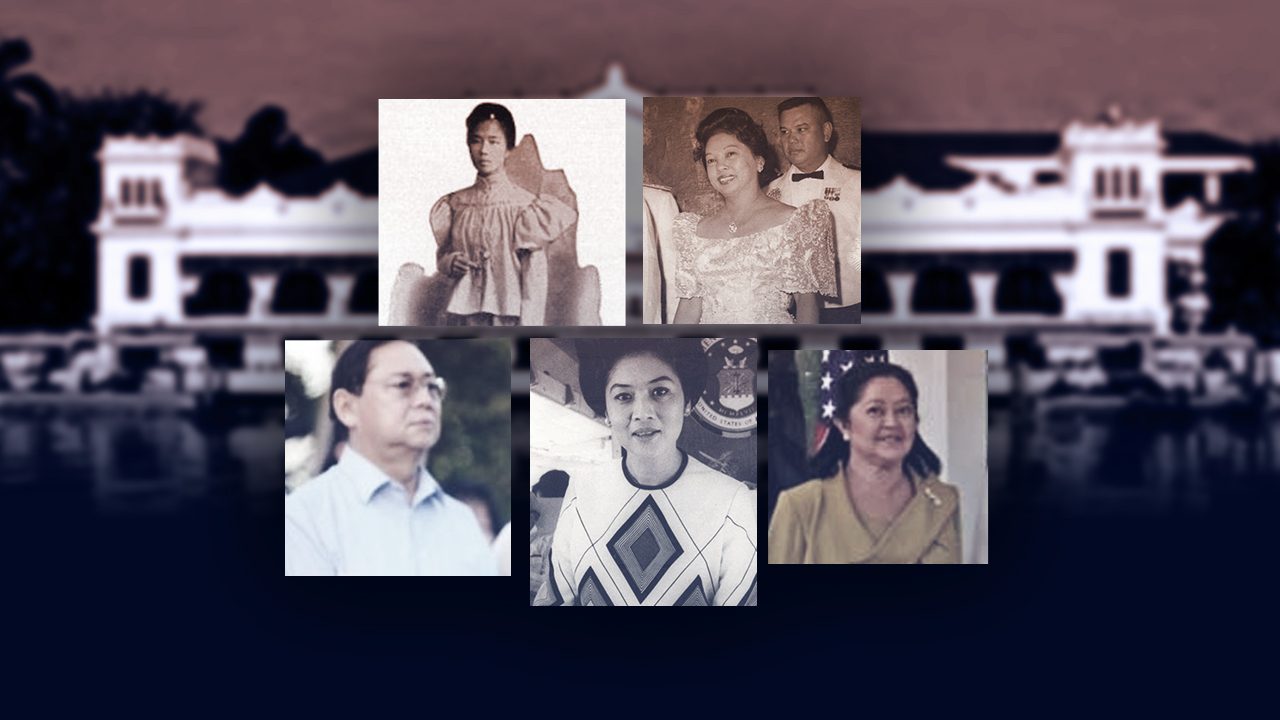
MANILA, Philippines – For a country that puts a premium on filial bonds, it’s no wonder that becoming president inevitably means placing one’s entire family under the spotlight, and in many cases, public scrutiny.
The public has seen this too many times, but it has become more apparent in the age of social media. On TikTok, for example, stylized videos of presidential children are produced and they spread like wildfire among supporters.
Beyond propaganda, presidential families play a huge role in “stabilizing the presidency,” according to historian and university professor Xiao Chua. Given that the burden of leading the country is heavy, family can help by providing much-needed support.
“The first families of the country also had a role in the making and unmaking of the president,” Chua told Rappler in an interview.
The role of a presidential spouse can never be understated. On paper, spouses do not have a political role, but there have been enough incidents in Philippine history that prove how much of an influence they wield. (READ: Liza Araneta-Marcos, First Lady of the Philippines)
For Chua, the power of a presidential spouse depends heavily on the president’s personality, as well as the couple’s own dynamics.
“In a way, you are as good a president as your spouse is,” he said. “Puwede maging downfall or Achilles heel mo ang iyong asawa (Your spouse can be your downfall or your Achilles heel).”
What has history taught us about presidential spouses and their priorities? Rappler takes a look at their advocacies and interests through the years.
Pre-Marcos years
Most first ladies during the pre-war and early years of post-war Philippines dabbled in humanitarian activities. Many of them worked in some capacity in various iterations of the Red Cross.
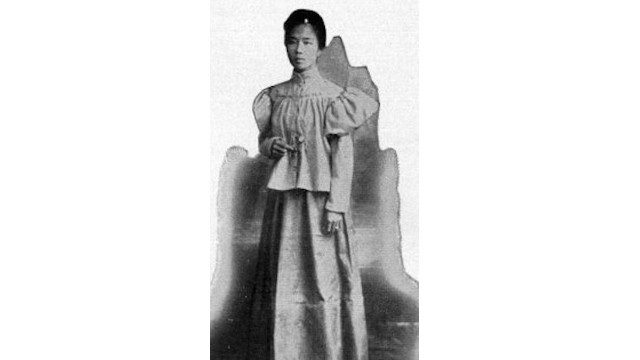
Hilaria Aguinaldo
Hilaria Aguinaldo, the first wife of the country’s first president Emilio Aguinaldo, was involved in helping casualties among those who rebelled against the Spaniards and Americans in the Philippines, according to the official website of the city of Imus.
She helped organize the Hijas de la Revolucion (Daughters of the Revolution), which later transformed into the Philippine Women’s Red Cross. Hilaria was president of the organization in 1899, according to the International Federation of Red Cross and Red Crescent Societies website.
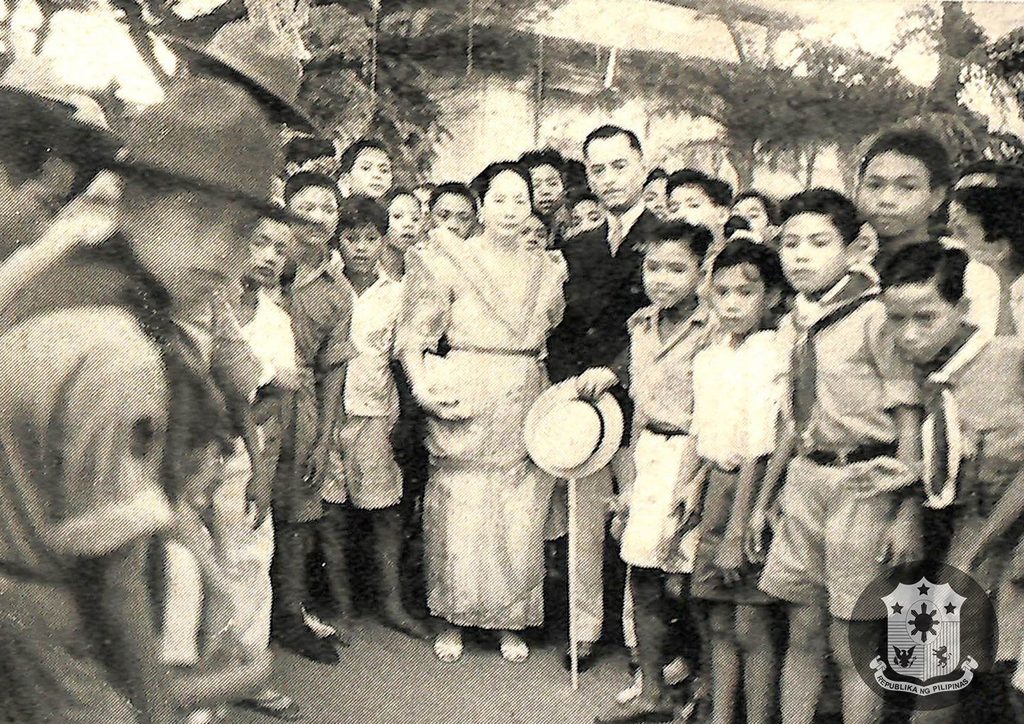
Aurora Quezon
Another presidential spouse known for her involvement with the Red Cross was Aurora Aragon Quezon, wife of president Manuel Quezon who served from 1935 to 1944.
While she stayed in the background during most of her husband’s political career, Aurora worked extensively with organizations focused on women’s rights. She was honorary chairperson of the National Federation of Women’s Clubs from 1931 to 1941, whose members included Josefa Llanes, and Pura Villanueva Kalaw, among others. Aurora also actively campaigned for women’s suffrage, according to her profile. It was her husband Manuel who signed the law that allowed women to vote in 1937, following a national plebiscite.
Her husband’s death in 1944 didn’t stop Aurora from her advocacies. While in California, she and her daughters volunteered with the Red Cross. She would later become the first chairperson of the Philippine National Red Cross in 1947, a post she held until her death. She was ambushed and killed in 1949 while on the way to inaugurate the Quezon Memorial Hospital in Baler.
“Very powerful siya in a way na kasi nakilala siya ng mga Filipino bilang matulungin na tao (She was very powerful in a way because Filipinos knew her as a very helpful person), so it was such a blow when she was assassinated,” Chua said.
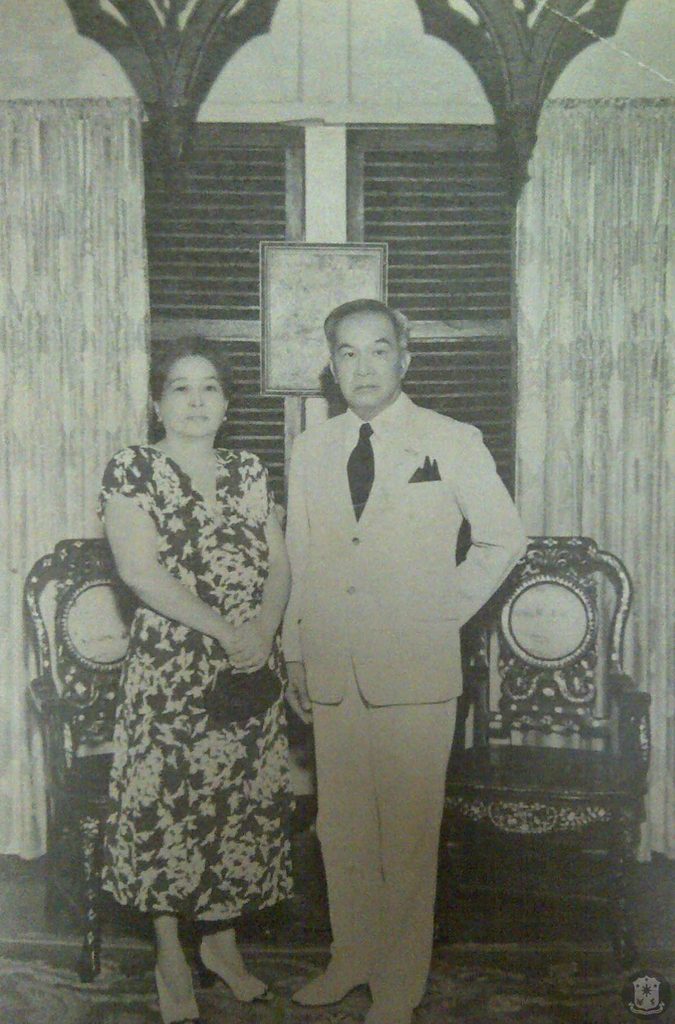
Pacencia Laurel
Pacencia Laurel busied herself with charitable work during her husband Jose Laurel’s term as president from 1943 to 1945 while raising their nine children.
It was the height of World War II, which saw the Laurel family evacuating from Manila to different areas.
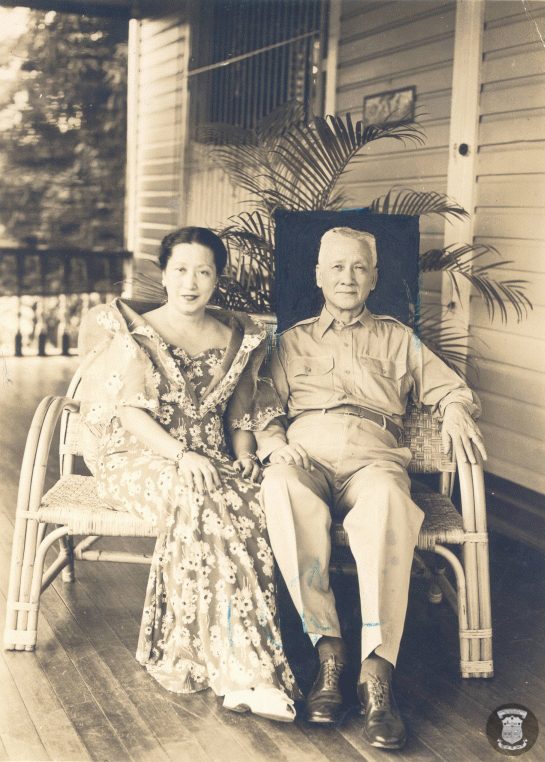
Esperanza Osmeña
Esperanza Osmeña was the first lady of Sergio Osmeña, who served as president from 1944 to 1946, mainly serving during the Japanese occupation. She remained in the Philippines during the war.
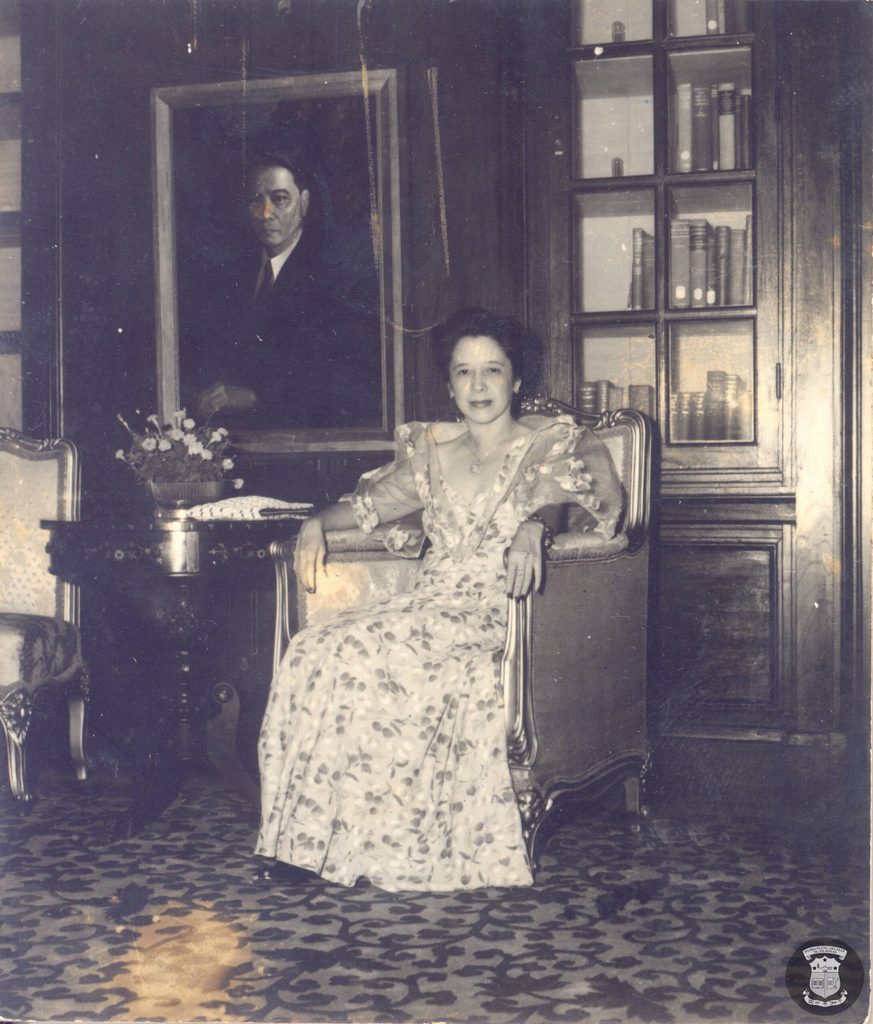
Trinidad Roxas
Trinidad Roxas, wife of ex-president Manuel Roxas, was the Philippines’ first lady from 1946 to 1948 – or the crucial post-World War II years in the country.
She mainly got involved in charitable institutions such as the White Cross, and took part in activities with the Girl Scouts of the Philippines.
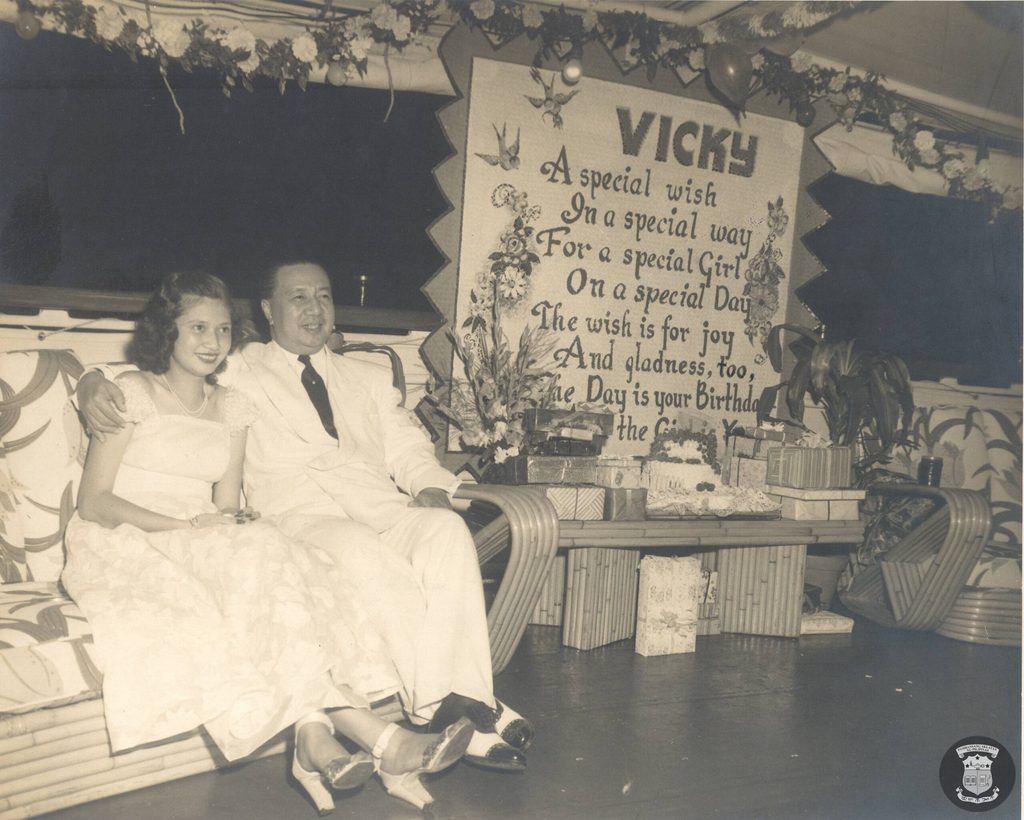
Victoria Quirino
Victoria Quirino was not a presidential spouse as she was the daughter of Elpidio Quirino, the Philippine president from 1948 to 1953. She took on the role of first lady since her mother, Alicia, was killed during World War II.
Just like her predecessors, Victoria played the part of Malacañang host and was also involved in raising funds for charities. It was during Quirino’s time that the Palace was refurbished – one of the rooms was converted into an official receiving room for Victoria, according to a 2006 piece by historian and writer Manuel “Manolo” Quezon III.
Victoria was also the first presidential child to wed inside Malacañang. She married Luis Gonzales in 1950.
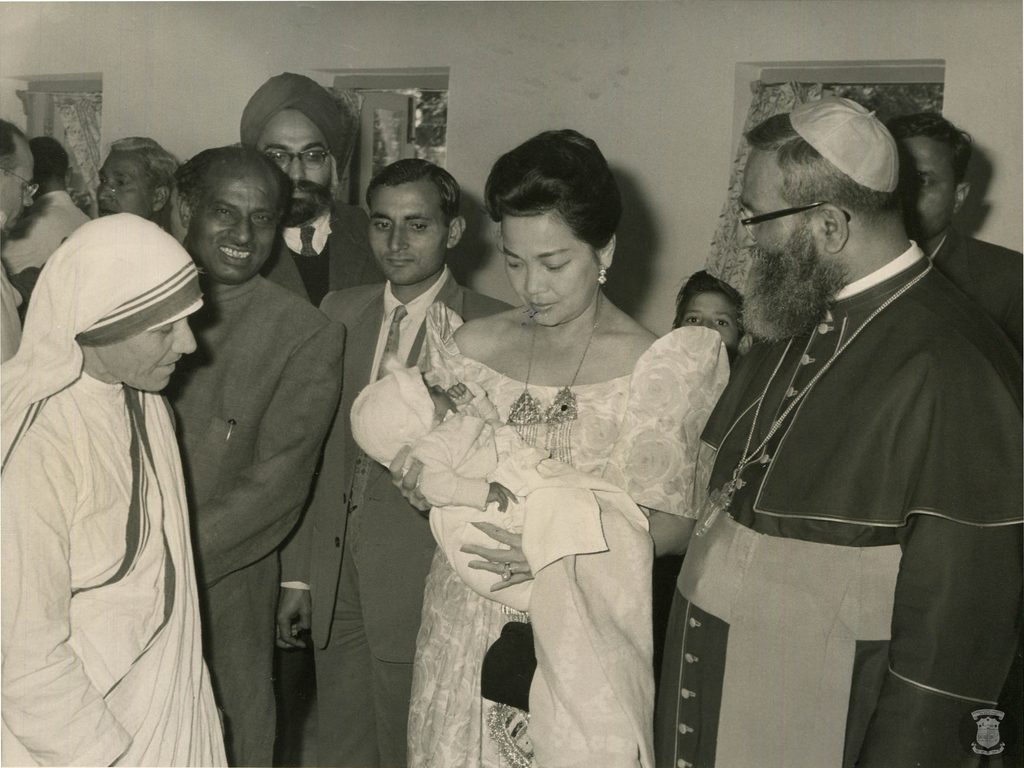
Luz Magsaysay
Luz Banzon Magsaysay, wife of Ramon Magsaysay, who was president from 1953 to 1957, served as honorary chairperson of the Philippine National Red Cross.
In 1957, she was appointed by her husband’s predecessor, then-president Carlos Garcia, as member of the Red Cross’ board of governors.

Leonila Garcia
Leonila Garcia, a pharmacist by profession, was first lady when her husband Carlos Garcia was president from 1957 to 1961. She was involved in several charitable activities, including Operation Puso, which was launched in 1960 to help victims of flooding.
Leonila ran for senator under the Nacionalista Party in 1971 but lost.

AT THE PALACE. Then-first lady Eva Macapagal joins her husband then-president Diosdado Macapagal in welcoming Crown Prince Akihito and Crown Princess Michiko of Japan in 1962. Photo from the National Library of the Philippines via Presidential Museum and Library
Eva Macapagal
Evangelina “Eva” Macapagal was the second wife of Diosdado Macapagal, who served as president from 1961 to 1965. She’s the mother of former president and now House deputy speaker Gloria Macapagal-Arroyo.
Eva, a physician by profession, supported and helped raise funds for health facilities and medical research in the Philippines. It was during her husband’s presidency that the Medical Research Foundation of the Philippines was allowed to conduct a “national education and fund campaign,” as authorized by Proclamation No. 197, released in 1964.
The conjugal dictatorship of the Marcoses
It’s not unusual to think of Imelda Romualdez Marcos when one talks about presidential spouses. She is, after all, one half of the conjugal dictatorship that oversaw Martial Law, one of the darkest chapters in Philippine history.
Historian Chua, who wrote his master’s thesis on the former first lady’s governance, said that Imelda was Ferdinand E. Marcos’ “secret weapon” even prior to becoming president.
“When Marcos cannot deal with difficult politicians, ang papupuntahin niya ay si Imelda, at iiyak lang siya sa harapan nila, kaya nakukuha ni Marcos ang gusto niya (He would let Imelda go and cry in front of them, then he’d get what he wanted),” he said.
Imelda’s first years as first lady – after her husband was elected in 1965 – focused mostly on charitable works and “beautification” projects, including the creation of the Cultural Center of the Philippines.

Marcos’ first term as president saw Imelda on the sidelines, talking to people and going on trips abroad to spend massive amounts on lavish items, at the expense of public funds.
The latter years of Marcos’ rule saw her take on a more powerful role, especially in the aftermath of the revelation that her husband had an affair with American actress Dovie Beams. Imelda’s influence and power eventually expanded, following the implementation of Martial Law in 1972. In fact, she was once dubbed the “de facto vice president” of the Philippines.
“Nag-bargain siya for power, lume-level na siya kay Marcos kaya siya tinawag na the other president,” Chua said. (She bargained for power, and was almost on the same level as Marcos that, she was called the other president.)
A New York Times article published in 1976 described Imelda as “being at once [Marcos’] chief supporter, a potential successor under his martial law regime and a sometime rival, with her own group of advisers and loyalists on the Cabinet.” The piece also cited information from “some knowledgeable sources” that Imelda also joined Cabinet meetings.
Imelda was appointed by her husband governor of Metro Manila in 1975, upon the creation of the Metro Manila Commission through Presidential Decree 824. A year later in 1976, she became the minister of human settlements. Imelda also became part of the Interim Batasang Pambansa, representing Manila from 1978.
Apart from her official government positions, the former first lady also took it upon herself to handle tasks akin to being a chief diplomat. In the 1976 book, The Conjugal Dictatorship, former propagandist Primitivo Mijares wrote that Imelda’s “international jaunts [were] undertaken on the excuse of opening doors for the New Society,” adding that “she enjoys most the task which gives her the illusions of a woman with vast pretensions of being a world diplomat as she goes about her royal hegira.”
Imelda’s involvement in stealing billions of taxpayers’ money was also placed under the spotlight, following their ouster from power after the People Power Revolution in 1986. She would later be convicted of graft.
Post-EDSA spouses
Imelda’s two-decade stint as one-half of the conjugal dictatorship shows how the power and influence of presidential spouses highly depend on the person taking on the role.
“It’s true that Imelda changed the way we look at first spouses, but it can always revert to low-key,” historian Chua said. “Ngayon, iniiwasan mo na maging sobrang powerful (Now you want to prevent spouses to be that much powerful).”

Amelita ‘Ming’ Ramos
Amelita “Ming” Ramos was the first presidential spouse following Martial Law since former president Corazon Aquino was a widow. According to Chua, Ming was “visible but did not appear too powerful” during the presidency of her husband Fidel from 1992 to 1998.
When Fidel was elected in 1992, Ming did not resign from her work as registrar at International School Manila, where she had worked in various capacities since 1955. She retired from ISM only in 2022, after 67 years of service.
“Why should I quit when I was earning more than Eddie even when he was President?” Ming was quoted as saying in a Philippine Star article published in 2005.
A holder of a physical education degree and an athlete, Ming also got involved in sports activities as first lady. She became president of the Philippine Badminton Association in 1994, a post she held for more than a decade. During her leadership, the group hosted various international competitions.
But Ming was also widely known as an environmentalist. Her stint as first lady marked serious efforts in the rehabilitation of the Pasig River, which was declared biologically dead in the 1990s. In 1993, together with civil society organizations, Ming spearheaded the Sagip Pasig Movement. Her husband also created the Presidential Task Force on Pasig River Rehabilitation the same year.
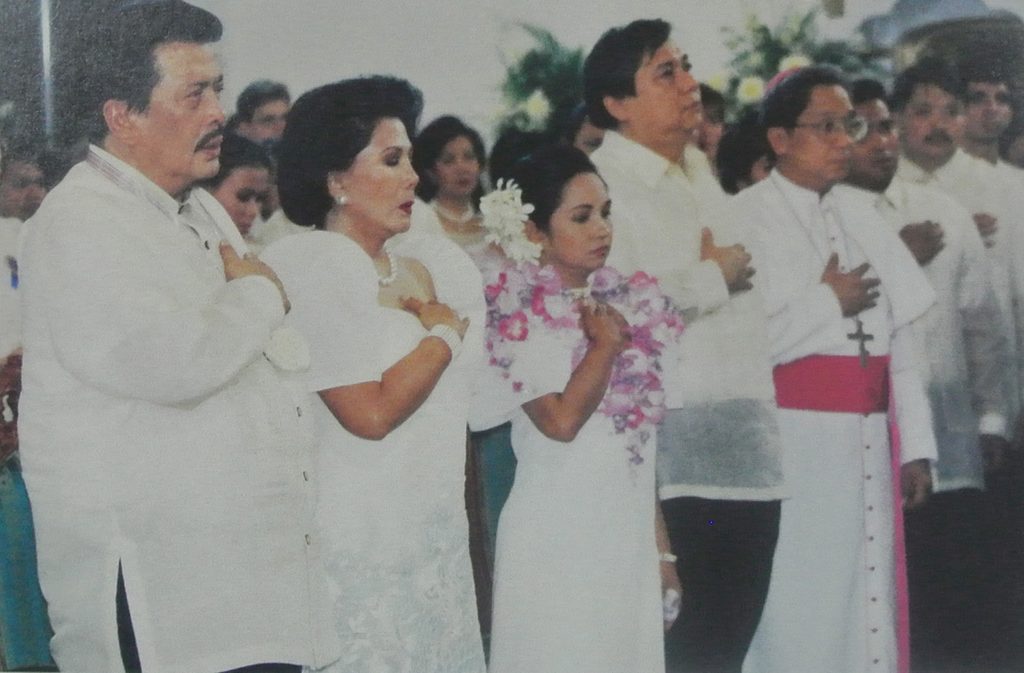
Luisa ‘Loi’ Ejercito
Before becoming Philippine senator, Luisa “Loi” Ejercito served as the first lady of president Joseph Estrada from 1998 until he resigned from office in 2001 after a series of corruption scandals, an impeachment trial, and protests that marked EDSA People Power II. She was also previously a second lady during Estrada’s stint as vice president.
Loi, a doctor by profession, focused a lot of her time on projects catering to the medical-related needs of Filipinos during her time as presidential spouse, among others. When her husband was sworn in as chief executive, Loi brought with her to Malacañang programs initially implemented by Masa ang Riwasa ni Erap (MARE) Foundation, which was established in 1992 in aid of an earlier Estrada program called Erap Para sa Mahirap.
“Hindi masyadong pumapel (She did not elevate herself), but she was always with Erap during events,” Chua said.
Following her husband’s resignation, Loi ran and won as senator during the 2001 elections. In 2004, she was joined in the Senate by her son Jinggoy, who was later charged with plunder and graft charges in relation to the pork barrel scandal.
Loi retired from politics after ending her Senate term in 2007.
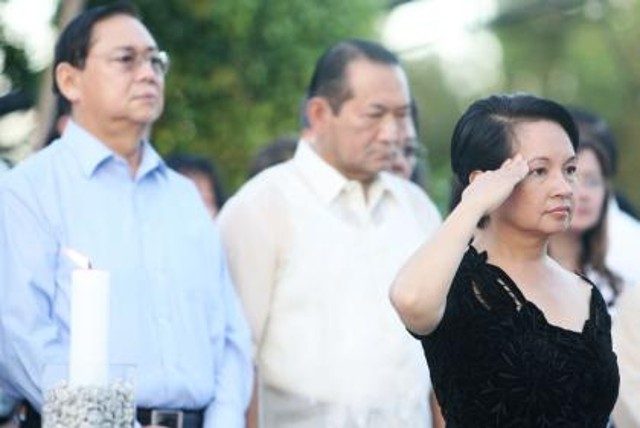
Jose Miguel ‘Mike’ Arroyo
Jose Miguel “Mike” Arroyo is the husband of the country’s second female president, Gloria Arroyo, who assumed the presidency after Estrada’s resignation.
This makes Mike the first first gentleman, since Corazon Aquino – the first female president – was a widow. Like many of his predecessors, Mike was also involved in socioeconomic and medical programs. He once even had his own show on state television, Explore With Mike.
But Mike also undeniably played a bigger role in the political sphere and trajectory of his wife Gloria. The latter years of the Arroyo presidency, especially after the 2004 presidential elections, unraveled this further.
“[He] was not just a first gentleman in the sense that he’s just the husband of a major politician, he was a big factor in the political career of Arroyo,” Chua told Rappler.
Mike was accused of corruption and electoral sabotage, together with his wife. Gloria, the former president, was eventually placed under hospital arrest in relation to a plunder case, but was acquitted by the Supreme Court (SC) in July 2016.
In 2012, Mike was charged with graft over the sale of second-hand choppers to the Philippine National Police. The case was dismissed by the Sandiganbayan in 2022, following an SC decision that ordered the anti-graft court to remove Mike from the list of respondents.
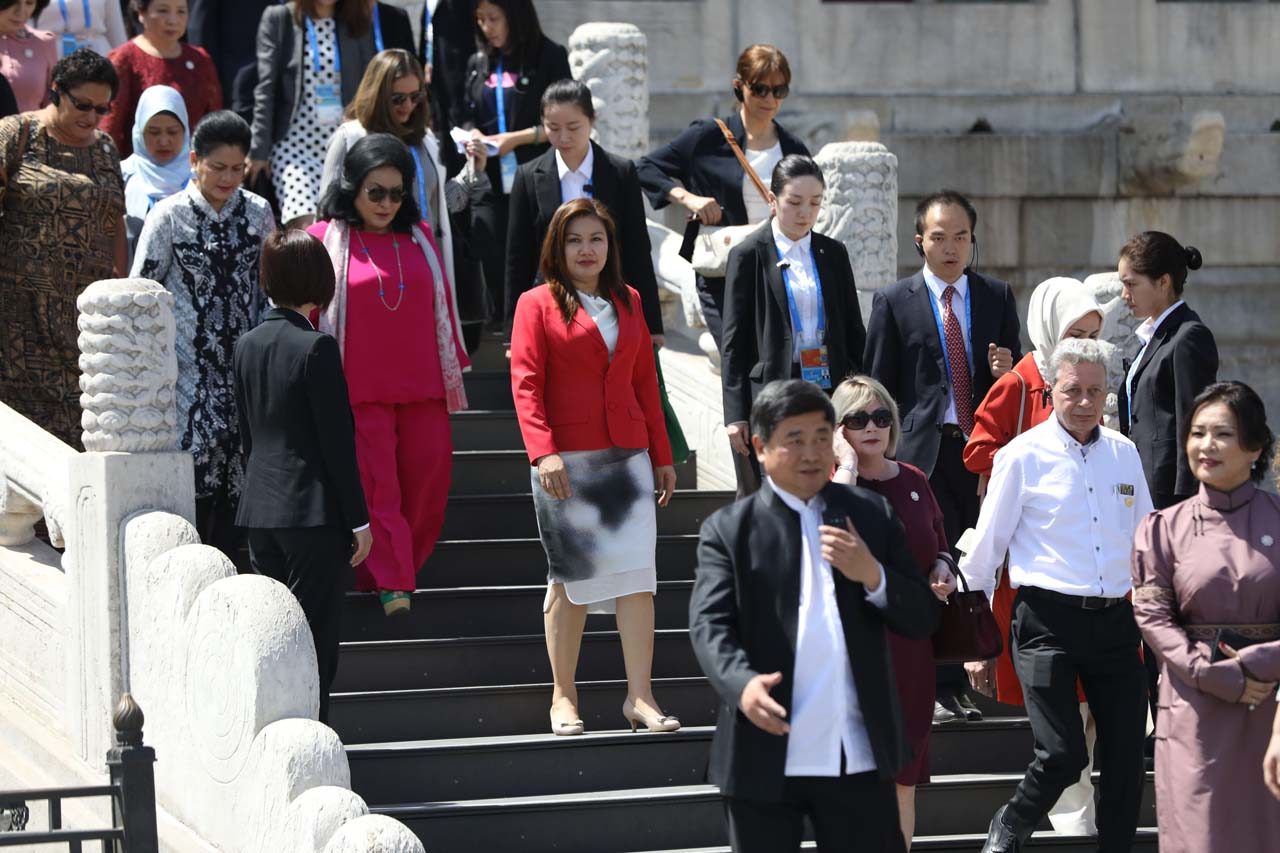
Honeylet Avanceña
Cielito “Honeylet” Avanceña is the long-time partner of then-president Rodrigo Duterte. The marriage of Duterte to his first wife Elizabeth Zimmerman – the mother of his three children, including Vice President Sara Duterte – has been annulled.
Honeylet once said that, before Duterte was sworn into the presidency, she had a separate life from his political career. She was a nurse by profession, but has since focused on running her own businesses in Davao City, including Mister Donut franchises and meat dealerships.
“Hindi ko naman talaga kailangan nasa public eye…. Nasa likod lang ako, alalay lang ako sa personal niya,” she told Rappler in 2016. (I don’t really need to be in the public eye…. I’ll just be in the background, helping him in personal matters.)
Honeylet, however, became more felt and seen in the months following Duterte’s inauguration. She would later join him in welcoming high-ranking foreign government officials, including then-Japanese prime minister Shinzo Abe, and attend the 30th Association of Southeast Asian Nations summit in 2017.
Honeylet was also involved in charitable projects, like previous presidential spouses. During Duterte’s visit to Cambodia in 2017, Honeylet and daughter Veronica visited patients at the Kantha Bopha IV Children’s Hospital. In early 2020, she led a relief mission with the Filipino-Chinese community to victims of the Taal Volcano eruption.
Honeylet also helped causes related to health. In 2019, she released a video urging the Senate to pass a law increasing the price of tobacco products. In the same video, Honeylet described herself as a “health advocate.”
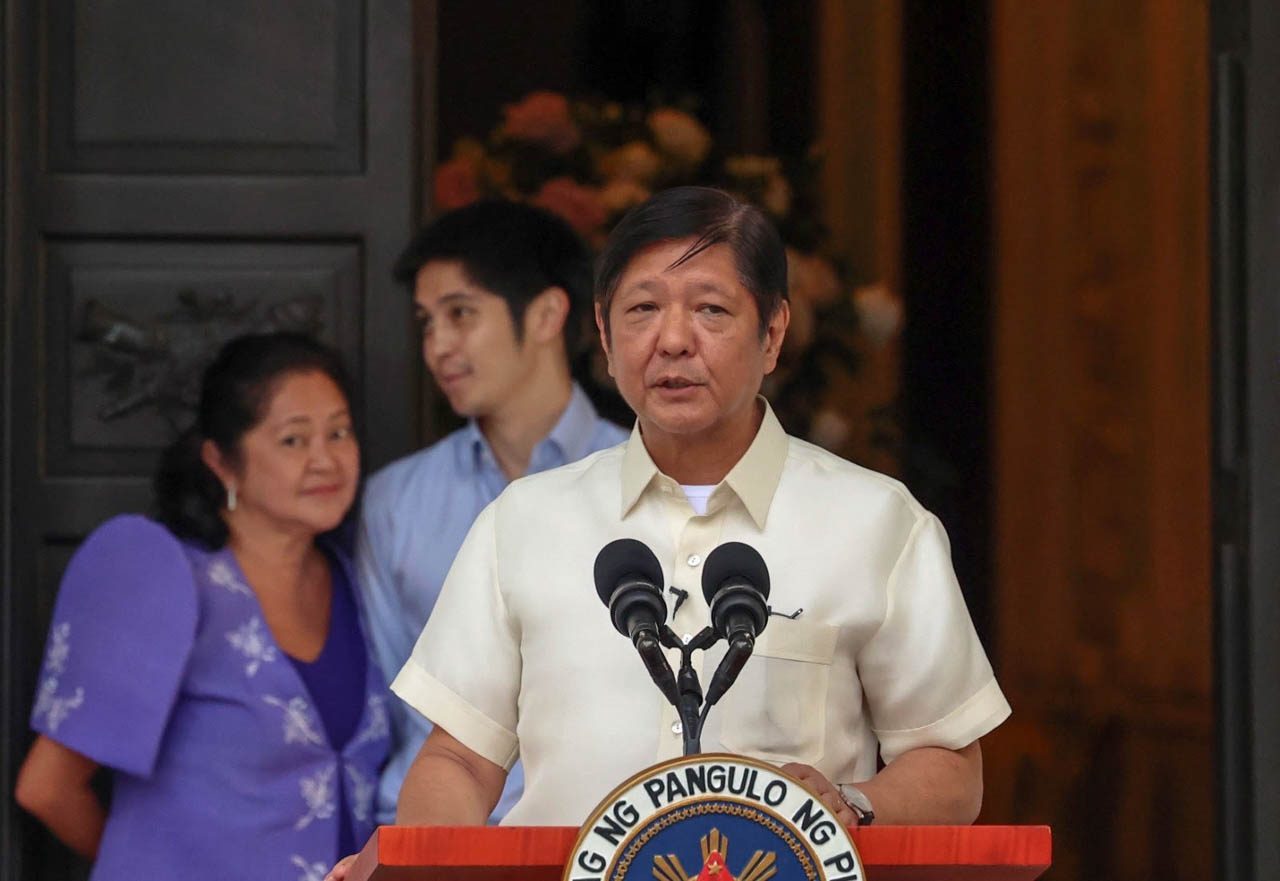
Marie Louise ‘Liza’ Araneta-Marcos
The election of the namesake and only son of the dictator Ferdinand E. Marcos also brought to the fore another Marcos first lady – Liza Araneta-Marcos.
Liza’s profile on the Marcos official website states that she was a “significant voice of reason” in the presidential campaign of her husband, highlighting that she and her team “helped” Ferdinand “Bongbong” Marcos Jr. win the 2022 elections.
She counts cultural preservation and education among her advocacies as presidential spouse. A lawyer by profession, Liza currently teaches law at the West Visayas State University in Iloilo City.
Just like her mother-in-law, Liza reportedly plays a major role in Malacañang affairs. The President has said he does not talk policy with Liza, and consults her only over “legal” matters because “she’s very good at that.”
In January 2023, Liza herself denied any involvement in military appointments, even warning that she’ll “tell [her] husband not to appoint” people who use her name. This comes after a revamp at the Armed Forces of the Philippines (AFP), when Marcos dismissed AFP chief Lieutenant General Bartolome Bacarro and reappointed Andres Centino as AFP chief five months after appointing him ambassador to India.
“Based on many versions of stories we’ve heard from many people, [Liza] has a big influence,” Chua said. – Rappler.com
Add a comment
How does this make you feel?
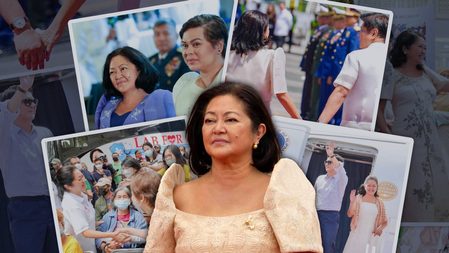











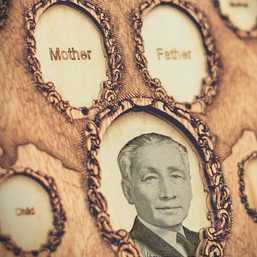
![[EDITORIAL] Marcos, bakit mo kasama ang buong barangay sa Davos?](https://www.rappler.com/tachyon/2023/01/animated-marcos-davos-world-economic-forum-carousel.jpg?resize=257%2C257&crop_strategy=attention)

There are no comments yet. Add your comment to start the conversation.